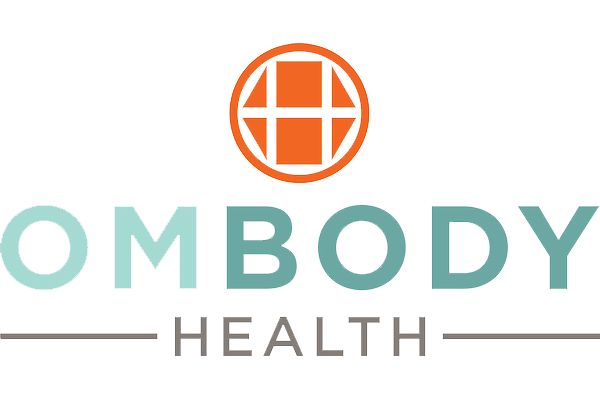
Congratulations! If you are reading this it tells me that you are excited about kickstarting, or reinventing, your organization’s wellness program. You should applaud yourself; forward-thinking leaders like you know that supporting employee health and wellbeing is essential within in 21st century workplace. Whether you know it or not, by taking this initiative, you are a leader within your company.
Wellness is a Marathon, Not a Sprint.
Before we dive in, it is important to recognize that wellness is a marathon, not a sprint. This holds true at both the individual and organizational level. We cannot expect that someone will become healthy overnight, nor can we expect that work cultures can change overnight. Whether we are implementing a workplace wellness program or a healthy lifestyle change, we should expect to be in it for the long haul and commit to enjoying the journey, challenges and all.
Fact: On average, it takes 3-5 years to observe a return on investment in employee wellness. That said, short-term shifts can have a significant impact on value on investment, which includes factors like employee satisfaction (aka happiness), retention and productivity.
What are the foundational elements of any workplace wellness program?
- Employer Engagement: Leaders and managers must advocate for and model healthy behavior and participation in wellness offerings as they arise.
- Employee Engagement: Provide opportunities for employees to share their health and wellness goals and interests and what they want to see in the wellness program. And develop a strong awareness campaign that promotes the program as it evolves.
- Wellness Committee: A diverse group of people representing different cultures (when relevant), levels and departments within your organization in charge of organizing and administering the program, relaying the vision, mission and values to employees, promoting the program, evaluating ongoing needs and goals, implementing solutions, and supporting employee efforts.
I like to think of building a workplace wellness program like growing a tree. The Wellness Committee is the core, the trunk, bridging the gap between the roots and the crown. The leadership and management teams form the roots, nourishing the organization and ensuring the resources and policies are in place to support the initiative. Once the infrastructure is in place for a strategic program, Wellness Ambassadors can be sprinkled throughout the organization. These individuals are analogous to the branches of tree, while the employees represent the leaves.
7-Step Process to Building a Strategic Wellness Program

Step 1: Engage leadership.
My guess is that you are in one of two scenarios: 1. Senior Leadership charged you with the task of developing a wellness initiative; 2. You recognize the importance of employee wellness and have taken this initiative on yourself. If scenario 1 applies to you, you can consider this step done. If scenario 2 applies to you, it will be important for you to get their blessing before moving forward. Whether or not you need a budget for wellness, senior leader buy-in is the most important factor during the early stages of the wellness program.
Get yourself on the agenda during the next all-leadership meeting, or at the very least bring this up during your next check-in with your boss. Regardless of whether or not you will be asking for a wellness budget, you will be putting your valuable time into developing the initiative—and requiring their and other employees’ time as well—so make sure you go into your meeting prepared to make a strong business case for employee wellness. Check out our post titled “Top 5 Reasons to Invest in Employee Health” for facts and figures to strengthen your pitch.
Step 2: Establish your core team.
The Wellness Committee should be a small team of about 3 to 6 dedicated people (3-4 for small organization and 4-6 for mid-size companies)—any more than 6 voices can stifle decision-making and forward momentum. The committee should also have one Wellness Program Coordinator (additional roles will be established later on). I like the title “Wellness Catalyst”, but you and your team can get creative! (Note, if you are the HR leader within your company, the Wellness Program Coordinator does not have to be you; in fact, this role may be better filled by someone else to empower a grassroots approach.)
Gather a team of stakeholders to discuss why establishing an integrated, structured, and strategic wellness program is important to for the organization. Do your best to engage at least one member at each level (a senior leader, HR team-member, employee, and manager) in this conversation. If your organization has many different job functions, such as drivers, warehouse workers, desk workers, etc. try to involve someone from each department. I suggest scheduling an informal, 30-minute lunchtime meeting and send a brief email company-wide explaining your intention and asking for volunteers to help you. (Don’t be afraid to ask for help!).
Step 3: Establish your timeline.
Establishing some target dates will be key to moving steps 4 through 6 forward. The Wellness Program Coordinator should lead this process, delegating to other members—e.g., one person should be charged with drafting the survey, someone else can develop marketing to promote the survey, the HR leader can be charged with reviewing both the survey and promotional content, and so on. When I guide organizations through this process, I generally like to set aside a month for each step (4-6 below), with one committee meeting at the start of each month—guided by a detailed agenda outlining talking points, meeting objectives, and the timeline for that month with specific deadlines and roles—and ongoing communication between meetings as needed.
Step 4: Evaluate the current state of employee health and wellness.
In addition to reviewing worker’s compensation claims and health care spending, use a diagnostic tool like survey monkey to administer an anonymous survey that touches on the 4 essential aspects of workplace wellness (below). The survey can also be used to gain insight into employee participation, engagement and satisfaction rates. You should aim for at least 75% participation in the survey. A great way to increase participation is to include participants in a raffle of gift cards or wellness-themed prizes that excite your employees.
4 Essential Aspect of Workplace Wellness
- Lifestyle choices (smoking and other addictive tendencies, sleep)
- Organizational Wellness (workplace environment and management practices)
- Physical wellness (nutrition, exercise, weight, pain/injury)
- Emotional wellness (stress, mental wellbeing, work/life integration, life satisfaction, happiness, relationships)
Step 5: Develop a unifying wellness brand.
Now comes the fun part! Creating a unifying brand/image for the wellness initiative unites the organization around a common objective, ties all wellness messaging together, and shows employees that this effort is here to stay. Your wellness brand should include a program name, tagline, logo, mission statement, and list of values. Each value should include a brief, bulleted description of what the value means within the context of your organization’s employment brand (why people work for you or should work for you; how you want your employees to feel).
For the organization’s we team up with, we develop a Wellness Brand Guide, which outlines the key aspects of the brand, serving as a cheat sheet for all verbal and written wellness communications and a guidepost for initiatives. Each time you organize an event or send out a wellness promotion, you should ask yourself, does this align with our wellness mission and values, with our wellness brand?
Step 6: Draft your Wellness Action Plan.
Once you have a clear guiding mission and set of values, it is time to develop your plan! Develop a 6-month to 1-year Wellness Action Plan based on diagnostic results and organizational goals.
Your Wellness Action Plan should:
- Introduce the initiative (who, what and why) and the brand
- Specify and profile the targeted audience
- Highlight the communication outlets you will use (e.g., email newsletters; flyers, posters and other physical reminders; group gatherings; online portal; digital signage; etc.). If you plan to use flyers, where will these be posted and who will be in charge of posting them? You can also differentiate between short-term (immediate) communication strategies and long-term targets – for example, you might set a goal to utilize an online portal or digital signage within the next 3 years.
- Outline the program focus, including goals, themes, and timeline of events.
- Include a communication timeline and charge someone with the role of Wellness Promoter (they will be tasked with developing all communications according to the timeline)
- Protocol for tracking participation and other metrics, reviewing communications, collecting employee feedback, and evaluating the program.
- Anything else that is relevant to your organization/wellness initiative, such as participation incentives. You want this plan to be as detailed as possible. Imagine you could hand it to someone new coming into the organization, could they pick up where you left off?
Eventually you want to work up to a 5-year plan. Your 5-year plan should be flexible with room for annual re-assessment and adjustments according to program results and employee feedback.
Step 7: Launch, Implement, Evaluate and Adjust
With all of the infrastructure in place, you are ready to launch the program to leadership, managers and employees! I recommend going in that order. Presenting the final brand and action plan to leadership first, then engaging managers in a focus group discussion around their excitement and concerns/barriers for the initiative, and lastly rolling out the program to employees. Ideally the launch is done verbally during an all-company gathering. Include a fun, wellness themed icebreaker. As the program gets underway, make sure you are measuring and monitoring employee feedback and participation, as well as annual absentee rates and claims data (disability, medical, worker’s comp), and adjusting the program accordingly.
Was this article helpful, but want more guidance? Let us know! We will be launching a DIY Toolkit for small to mid-size companies looking to move the dial on employee wellbeing. Click here to join the wait list and be one of the first to find out when our toolkit is ready.
Have questions about this process, or want support? Contact us for your free Employee Wellness Strategy Session. During this session, we will work with you and/or your wellness committee to move your wellness program forward, regardless of where you are starting from. Click here to get started!
About the Author
Allie Andrews, MED, Certified Coach
Allie is the Founder and Program Director at OmBody Health. In addition to coaching thought-leaders, executives and professionals to maximize their impact and quality of life, she and her team empower organizations to develop work cultures that foster employee health, happiness and full potential living.

Comments
4 responses to “How to Build a Strategic Wellness Program in 7 Steps”
Impressive content Allie!
Thank you!
Great and informative content!
Thanks for reading!